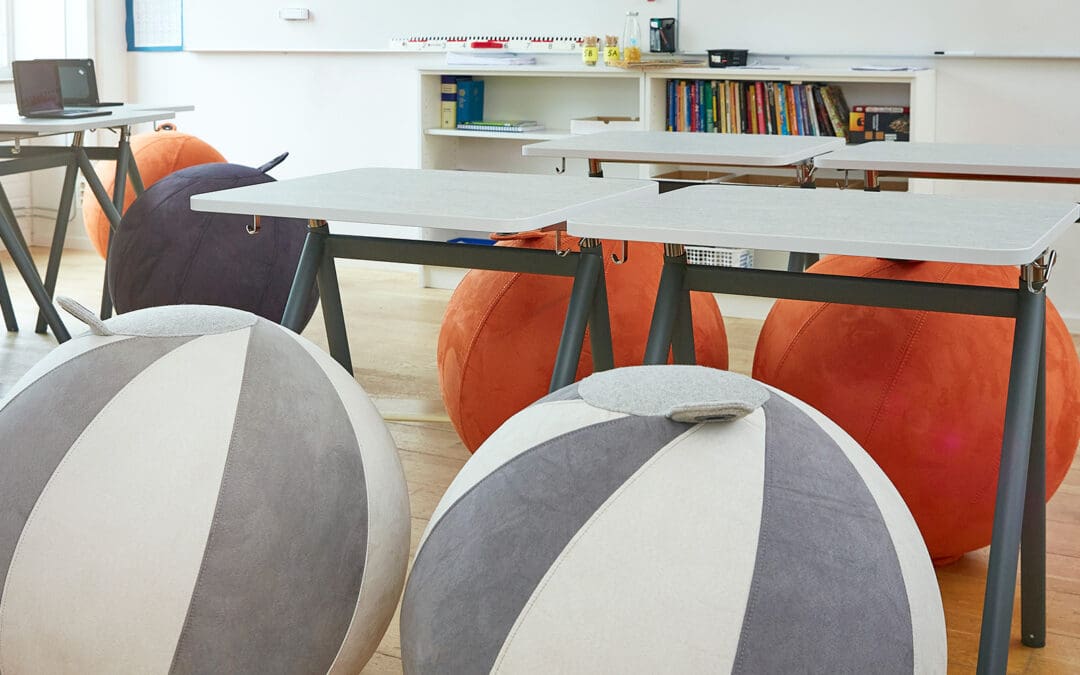For many children and young people, sedentary behaviour has increased so much that it is considered a global health risk. The World Health Organization (WHO) has issued a call for action to reduce sedentary behaviour among young people. Read more about the study and the recommendations.
But there are great opportunities already in the classroom to reduce sedentary behavior with the right design.
” In the work environment of adults, the Work Environment Directive highlights the importance of opportunities for a varied and ergonomic working position. The workplace is often equipped with height-adjustable tables and various ergonomic aids. But what about our children and young people at school? What does their ‘workplace’ look like? Our children also spend a lot of time in their ‘workplace’. “
As if time stood still
Unfortunately, the working environment in schools has not changed much in the last 30-40 years. The furniture still consists in most cases of fixed benches and chairs with no possibility of variation or adaptation for the pupil. For some students with special needs, the sedentary environment creates even greater challenges.
Creating good habits at school
It is at a young age that we lay the foundations for the behaviors we develop in adulthood. It is therefore important to establish healthy habits at school.
A sustainable way is to give children the same opportunities as adults for movement and variety from an early age. Allowing children to switch between sitting and standing during lessons increases circulation and oxygenation. Because it is the movement made every day that makes a difference.
So instead of encouraging students to sit still – encourage them to stand up.
Invest in some height-adjustable school desks.
The ability to change position when their legs are “crawling” means that children don’t have to spend energy trying to sit still and can focus on their tasks. Standing increases oxygenation, resulting in more alert students and better concentration.
Regular exercise increases reading comprehension
There are several studies that highlight immediate mental effects on students and the surrounding learning environment. After just a few minutes of movement, concentration and reading comprehension improve. Overall, activity and movement in schools can increase learning by as much as 50%. This is because we can remember and concentrate better when blood circulation increases and the brain receives more oxygen and nutrients.
Regular exercise also releases more of the brain’s feel-good hormones and provides a natural physical outlet for stress hormones. This makes us more creative, resilient and positive to actively participate in learning and less likely to disrupt others.
Physical activity is also highlighted as ‘medicine’ for children with diagnoses such as ADHD. By exercising for half an hour in the morning and having space for movement at school, they can perform at the same level as children without a diagnosis.
Just as we applaud babies when they stand up for the first time, we should continue to encourage children every time they stand up. Even during the school day.
Together we take the step
There are many great initiatives and partnerships to increase children’s activity both at school and in their free time.
One is the work of the non-profit organization Generation PEP, which you can read more about here.
Another example is our neighboring country Finland, where the Ministry of Education and Schools has announced development grants to make exercise part of the school day. Read more here.
Let’s make sure that our children also have the right to an ergonomic and healthy study environment.

